Each modern person at least once in their life has encountered the problem of parasites in the body.The quantity and variety of parasites which, in the literal sense of the term, cannot live without us, are simply enormous.The parasites of the human body use it as a source of food and habitat until they exhaust it completely, but without distributing their presence.
Parasites are microscopic sizes or can reach several meters in length, but even in this case, their vital activity in the body cannot always be felt.A person, as a rule, does not feel them and does not even know his presence in himself.Meanwhile, they are able to live in a human body for years and even decades, which has caused him irreparable damage.
The parasites of the human body represent a serious danger and represent a great threat to human health, because they violate the work of organs and internal systems, cause failure in the work of the immune system and interfere with the complete assimilation of useful substances, vitamins and minerals.In some cases, the situation is so serious that it can even lead to death.
Types of relationships between organizations
In nature, there are several types of relationships between organisms that have a diversified effect on each other.
The impact of one species on another can have both neutral or positive and negative.
In addition, there are different combinations of such relationships.Distinguish:
- symbiosis;
- neutralism;
- Antibiosis.
Symbiosis is a form of relationships between two organizations, the two of which benefit from it.
Neutralism is a type of biological connection, which consists in the home of two organizations on a single territory, but at the same time, they are not linked to each other and do not affect directly.
Antibiism is an antagonistic type of biological relationship in which a type of population limits the possibilities of another, affecting negatively.One of the most negative types of antibiism is parasitism.
Parasitism and parasites
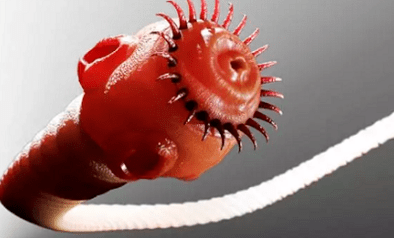
Parasitism is a form of antibiotic in which representatives of one species use the body of another species as a temporary or constant environmental environment and a source of nutrients.
Biological organizations that live at the expense of another organism are called parasites.
Parasites do not kill their owner, but for a long time use it as a source of food and habitat.
The parasites include:
- Parasites;
- pathogenic bacteria;
- protozoa;
- Mushrooms;
- Virus.
Host organizations can be:
- bacteria;
- protozoa;
- plants;
- animals;
- Human.
In the development process, parasites pass several stages in the development of eggs and larvae to adults (sexually mature, invasive), which indicates their long life and must change 2-3 owners.
Classification of parasites
All parasites are divided in connection and optional.
Parasites force outside the host's body die or exist in an inactive state.For example: virus.They lead an exclusively parasitic lifestyle, that is to say that they depend completely on the owner and activate their activities within it.
Optional parasites lead a parasitic lifestyle, but if necessary, can exist in an absolutely normal form in the external environment.For example: pathogenic fungi and bacteria.
By the nature of the relationship with the host body, they share:
- real parasites;
- false parasites;
- Super parasites.
Real parasites are the same liaison parasites for which a parasitic lifestyle is the only form of survival.However, there are parasites that can be either a liaison (constant) and optional (temporal).For example: lice, chips, intestinal helminthes.
False parasites - voluntarily living organisms, which, in the event of accidentally entry, are able to live there for a certain time and to harm it.For example: the larvae of a piece fly in the intestines of a person.
Super parasites are parasites living in other parasites.For example: bacteria and viruses in other parasitic insects that live in other organisms.
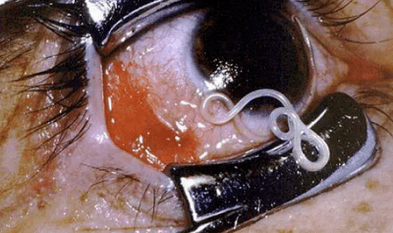
Depending on the duration of the interaction with the host body, they distinguish:
- constant parasites;
- temporary parasites.
Constant parasites are organizations that lead their whole life cycle in the body - the owner, moving the larvae.For example: Asscarids, Ténias, Lice.
Temporary parasites;Live and eat at the owner's expense at a certain stage of development.For example: the larvae of a volt -melt fly and an imago (adult insects) -in fleas and mosquitoes.
At the location of the host body, parasites are divided into:
- ectoparasites;
- Endoparasites.
Ectoparasites are organisms that live on the skin of the host body.For example: lice, chips, ticks.
Endoparasites are organisms located inside the host body.Endoparasites are divided into:
- internal parasites;
- tissue parasites;
- intracellular.
Intra-capation parasites are organisms that are located in cavities connecting to the external environment, for example: ASCARIS, VLASOV in human intestines.
FABLE PARASITES - Type of organisms located in closed cavities and fabrics of the host body, for example: for example, the liver bacon, the cytics of adhesive tape worms.
Intracellular parasites are located in body cells - the owner, for example: plasmodia malaria, toxoplasm.
In terms of distribution in the environment, parasites are:
- Completed, encountered everywhere;
- Tropical, which are only common in the warm tropical climate.
Depending on the biological and epidemiological characteristics, the parasites are divided into:
- Geogelmincts- These are parasites that initially undergo a stage of development in the human body, then in the external environment (for example, the earth);
- Biogelmincts- parasites in which the development cycle takes place not only in the human body, but also in the organisms of other creatures.A person, as a rule, is the final and sometimes intermediate owner.
- Contact the HelminthesThey distinguish themselves from the body of the host by already mature or half mature, following which it is possible to repeat his infection or his infection of another person (autoinasia, reinvasy).
How parasites fall into the human body
There are many favorable factors that contribute to the entrance to the parasites in the human body:

- dirty hands;
- animal hair;
- poorly cooked products (food factor);
- House maintenance factor;
- transmitted;
- punchy.
Dirty hands are the main source of parasitosis infection.There are a number of diseases called "dirty hand diseases".The verse larvae, first falling on the skin of the hands, then in the mouth, cause characteristic symptoms of the gastrointestinal tract.The transmission path of these infections is called fecal-oral.Thus, the helminths with contact helminthiasis fall into our body.For example, ascaride eggs penetrate into the human body through dirty hands, poorly washed vegetables, fruits, berries, green vegetables and are also distributed in flies.
Animals and their wool are a source of ascaride and liphyli with verses.For example, for a long time, which fell from the animal's wool, retains vitality (up to about 6 months) and, falling on carpets, things, bedding, toys and children for children, enter the food sector.
In addition, thanks to damp breathing, dogs and cats can dissipate the eggs from parasites at a distance of 3 to 5 meters.In addition, there are fleas on the wool of dogs and cats, which also tolerate verse eggs.
The food method of infection by parasites is carried out:
- through poorly washed vegetables and fruits;
- poorly cooked foods (most often meat);
- Infected water.
For example, a wrong barbecue, a dried or homemade lank can infect a person with trichinellosis and echinococcal, and badly cooked dry fish or caviar can cause an infection with an opisthorchiasis and a wide strip.
The transmissive method of infection occurs using blood insects, for example: ticks, mosquitoes, lice, chips, insects.
Contact - The domestic path of infection is carried out through a infected person or animal, by contacting or using current household items.
The impactful infection method occurs during the bath in the tanks or in contact with an infected soil.The larvae penetrate the body through the mucous membranes or the human skin during contacts with infected water or soil.
Characteristics of the device
Almost all parasites are very adaptable to survival.There are a number of factors that contribute to their great vitality:
- A long life expectancy.For example, helminths live in the human body for years, and sometimes exactly that the owner lives.
- Helminthe eggs are able to persist and not collapse in the outside environment for decades.
- The parasite development stage also contributes to its life expectancy.He passes all the stages of development, from the egg, continuing the larva and the change of the owner, in the event of lack of nutrients.
- The ability of parasites to cause a state of immunodeficiency from the owner, which allows you to penetrate pathogens from the outside, as well as internal dormant infections "encourage".
- Helminthes that fall into the gastrointestinal tract of a person produce anti-azymes, which allows them to pass their own death, but at the same time, they violate the normal process of eating and provoking allergic reactions to drug addict in their host: asthma, urticaria, dermatitis.
- The invulnerability of parasites is associated with the exchange of genetic information during sexual reproduction, which leads to the stability of their heterogeneous population.
- The great vitality of helminths in many habitats: soil, water, animals, plants.
- The absence of effective methods of immunoprophylaxis, as parasites are able to delete or modify the immune response of the host body.
How to identify body parasites
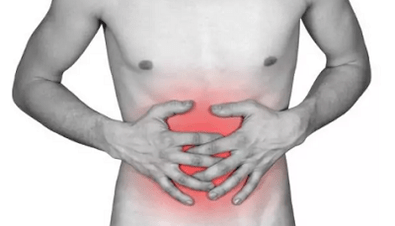
As a rule, a person asks such a question when their health is completely undermined.It is common for a person to reject the problem at their initial stage until it develops in a serious form and will affect their well.
Since the parasites are divided by the body's home - the owner in endoparasites and ectoparasites, the symptoms are divided into interns and external.
Ectoparasites are characterized by a certain activity, which manifests itself by the following symptoms:
- rashes;
- itching;
- burning;
- hyperemia;
- pain (if it was a bite);
- The presence of an injury instead of a bite.
Endoparasite detection is much easier.The following actions are carried out for this:
- Visual identification (if there is penetration from the outside through the skin);
- Microscopic examination.
The discovery of ectoparasites is a difficult task, because in the process of evolution, "dependent people" have adapted to survival, while disguising and without betraying themselves, they carry out destructive work in the body of the host.After all, a person lives, for example, with worms from their appearance and the stages of their development can take from several months to a decade.So how can we determine the presence of parasites in the body?
External and internal demonstrations
Since parasites differ in a long life expectancy and actively multiply in the human body, they cause symptoms that are recurring in the long term and chronic.
The external demonstrations of parasitic activity include:
- rash;
- itching;
- burning;
- hyperemia;
- feverish condition;
- Quincke edema.
It is important to know that the degree of development of allergies depends on many factors:
- location of the parasite in the body;
- Parasitic contact with tissues and vital organs;
- The amount of toxins produced.
The following symptoms include violations in the body of the internal invasion:
- disorders in the work of the gastrointestinal tract (nausea, diarrhea, stir);
- weight fluctuations associated with a lack of nutrients and a decrease in appetite;
- Fancy candy due to metabolic disorders and a general weakening of the body;
- Chronic fatigue syndrome, which manifests itself by general fatigue, drowsiness, in certain cases insomnia, altered concentration and memory;
- Constant headaches caused by the weakness of the body and poisoning;
- Griding your teeth in a dream (bruxism) manifests itself particularly in children;
- swelling of members;
- nervous disorders and mental disorders, as parasites can cause depression and irritability;
- paroxysmal cough;
- Muscles and joint pain;
- painful pallor of the skin;
- Skin lesions (dermatitis, eczema, acne and acne).
It is particularly important to know the general symptoms which are observed with a parasitic intestinal invasion.
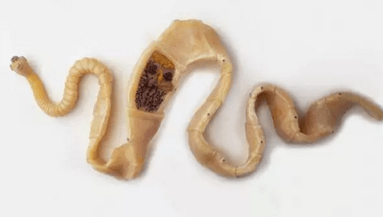
Violations in the digestive tract, which manifest themselves in the following symptoms:
- intestinal cramps;
- Irritable colon syndrome;
- flatulence;
- constipation or diarrhea;
- Change the color of the excrement;
- itching in the anus;
- Helminthes visual detection;
- The presence of worms in the gag.
Since worms can reach important sizes in the body, they are able to physically complicate the progress of the excrement and violate the work of other organs, for example bile ducts.
Parasites can cause violations in the work of an organ or a particular system.
The most common violations are:
- Anemia.
- Lesions of the central nervous system.
- Abscess in the liver.
- Purulent inflammation of the gallbladder and the pancreas.
- Fruits in the work of immunity, until the development of autoimmune reactions.
- Operation of the respiratory system.
- Joint diseases.
Diagnosis of parasites
All the above symptoms cannot always confirm with precision the presence of parasites in the body, as these symptoms can be observed with many diseases.
You can establish the presence of parasites in the human body when examining the excrement.However, this method is not reliable, because parasitic larvae cannot always be seen under a microscope or jump them.In addition, all parasites do not bridge a lot of eggs.
In order to detect parasitic larvae in the excrement, it is necessary to take up to 8 to 10 times a fecal analysis.But if in this case, the analysis has not shown anything, but the doctor has doubts, then a certain number of serological blood tests are prescribed, which will help detect the Helmins antibodies that appear in the blood a few weeks after infection by parasites.
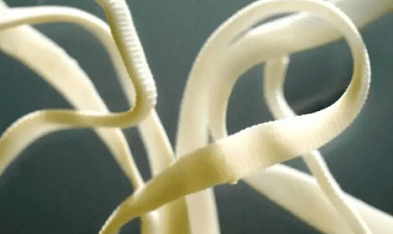
There are other methods to identify "dependent people" of the SO chain test.A chain with a capsule is inserted into the intestines by the nose and removed it after four hours with the samples received.
Another method is a colonoscopy during which the specialist considers the condition of the inner surface of the colon using a special probe.
Specialists have found that the most common parasites are helminthes.In addition, they are all very viable and fertile, and their objective is to destroy their master and extract a maximum of advantages for themselves.
How to eliminate parasites from the human body
It is difficult to get rid of parasites, but it is possible.It is important to prioritize: it is necessary not only to know how to get rid of parasites, but also to understand what the process of treatment itself is.It is carried out in three directions:
- The destruction of parasites at all stages of existence.In other words, it is necessary to destroy not only adults, but also larvae and their eggs.
- Normalization of the work of all body organs and systems.
- Body restoration.
To satisfy the three above elements, will help modern drugs according to the plant components that the specialist will prescribe.
These drugs are modern drugs and have a certain therapeutic effect.The use of these drugs in the complex allows you to combine their therapeutic effect and obtain a wonderful result.
The dosage and combination of drugs between them are carried out on the basis of:
- stages of the parasitic invasion;
- general condition of the patient;
- the availability of complications of a certain organization;
- severity of the course of the disease.
The priority of Anthelminthes drugs is based on:
- efficiency;
- security;
- The possibility of combining several drugs for the best therapeutic effect.
Treatment with folk remedies is a very effective way to get rid of parasites.Most often, grass cleansing tea is used, which neutralizes the harmful effect of parasites, cleans the liver and the gallbladder.
They prepare tea as follows: Each take a tablespoon of the following plants: bark in oak, buckthorn, green wood, tansy.Then, a tablespoon of a mixture of plants is poured with 500 ml of boiling water and left in a closed dish during the night.In the morning, on an empty stomach, 100 grams of the resulting dye are drunk.The treatment continues for two to three weeks.
Pumpkin seeds are also very effective in the fight against parasites.To get rid of parasites, 300 grams of pumpkin seeds are taken, they are cleaned from the skin, but at the same time, they leave as many transparent films as possible, which envelops the seeds.The seeds should be consumed in the morning on an empty stomach.This recipe not only eliminates parasites, but also improves the functioning of the intestines, stomach, liver and gallbladder.





















